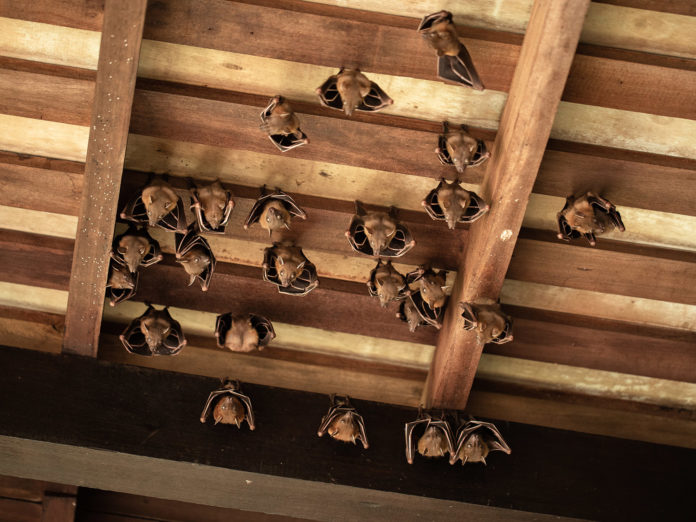For some, it would feel a bit like a horror story.
On Halloween night, 2020, I heard a scratching in the wall. We’d recently moved into the old farmhouse, so critters and crawlers in the walls are not a complete surprise. Nevertheless, I like to know who’s living under my roof. I followed the noise and traced it to an unfinished closet in our bedroom. Oh boy! I turned on my flashlight, opened the door slightly and peaked. Up on the wall, amongst the exposed boards and insulation, was a Little Brown Bat.
For my mother, that’s a dealbreaker. She would be out the door and locked in her car. (I know because a bat flew through our kitchen the first time she came to visit, and we thought she might never come back again.) But personally, I think bats are pretty darn cute. On top of that, I know they’re extremely beneficial.
Bat basics
The most common local bats in southern Minnesota are the Little Brown Bat and the Big Brown Bat (creativity A+ for whoever named those). A single big brown can wipe out a whopping 7,000 mosquitos in a single night. A little brown bat can take out 600 mosquitos in an hour. Besides reducing pesky insects, bats aid in pollination. Night blooming flowers such as evening primrose, four o’clocks, and the moon frolic daylily will encourage bats to patrol your garden, aiding in pest control without the use of harsh chemicals.
The most common local bats in southern Minnesota are the Little Brown Bat and the Big Brown Bat. Creativity A+ for whoever named those.
It’s been months and we haven’t managed to locate and remove that bat (I didn’t have bat-catching supplies handy so I just closed off the closet and deemed it Bat Hotel until it’s warm out and I’m feeling brave enough to start evicting) but it did get me thinking about bats and all their wonderful benefits. I want to encourage bats to hang out on our property, eat our mosquitos and pollinate our plants, but I don’t necessarily want them crawling around inside. The solution? Building a bat house!
Easy bat house
Making a bat house should be easy and inexpensive. There are plenty of online How To articles and designs to create your own bat house. Depending on the size you want, materials include just a few pieces of unfinished wood, the rougher the better, nails, hammer, saw, and some paint if you’re feeling fancy. My dad helped me build two small bat houses using scrap wood and materials we already had handy. It was easy peasy. (We’re talking about the man who built his own kayaks, but that’s a story for another time.)
We started by picking the most unfinished, unpolished scrap pieces. Bats need rough little spaces they can grip onto. We’re trying to mimic a small, appealing space they might find in nature, like an opening in tree bark. Using untreated wood allows the bats to keep a grip. You can also rough up the wood with cuts to make it easier to cling to. We added a thin layer of mesh so that the bats would have tons of spots to hang from.
We measured out pieces so that the houses would be narrow, with the back slightly longer than the front. This difference in length works as a landing pad. The bats land against the back and climb their way up. Then dad handed over the nail gun and I pieced it together. With a hooked wire on the back these babies were ready to hang.
Finding prime real estate
The success of a bat house depends on location, location, location. You want them hanging high enough so the bats will feel safe from predators, usually 8-15 feet. You also want them facing south, or at least in a space that gets plenty of sun, as bats like warm spaces. (Tip: if you’re having trouble maintaining a warm temperature, painting your bat house black can help trap heat.) In order to keep our bat houses out of the streetlight, we had to tuck them up in a far corner of the barn. My husband got a lift and hung them on some already protruding nails. (Safety tip: don’t do this. Use an actual ladder.) Our bat hotel is now open for business!
Even in perfect conditions, it can take years for bats to settle in. While I’ve seen a handful of bats in the sky over our house, it could take a while for them to move into their new house. It’s best to keep an eye out for activity in the house, and if you don’t get any visitors within the first year or two, consider moving your bat houses to another location.
For now, we wait.




